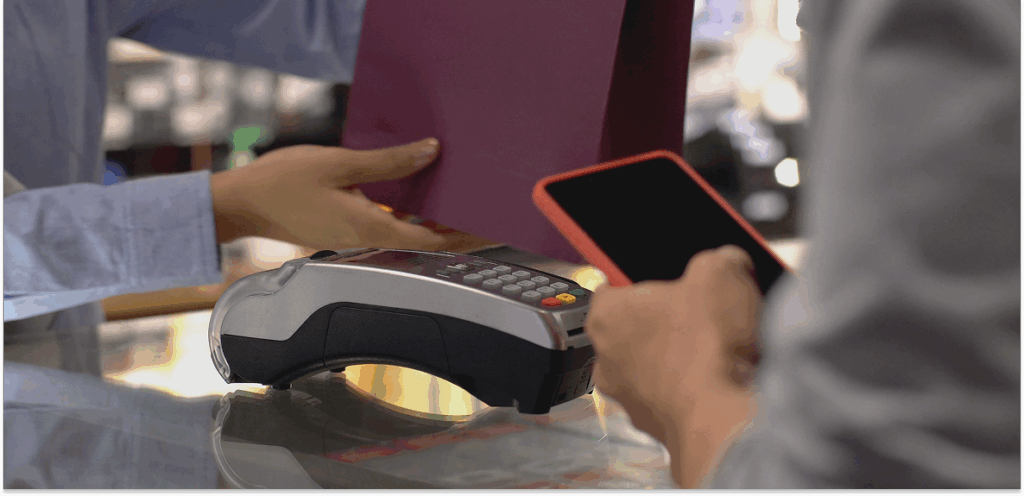
By Georgia Robinson May 7, 2025
In today’s fast-evolving commerce landscape, how a business accepts payments can shape everything from customer satisfaction to cash flow. With the growing popularity of smartphones and digital wallets, mobile payment solutions are becoming mainstream, especially among small and mid-sized businesses. However, traditional payment terminals still hold their ground due to reliability and familiarity.
For business owners, the choice between mobile payments and traditional terminals is not just about technology — it’s about what fits best with your operations, customer base, and future growth plans. This article provides a clear, side-by-side comparison of both methods to help you make an informed decision for your business.
Understanding Mobile Payment Systems
Mobile payments refer to transactions made using a smartphone, tablet, or other portable device. These systems often use apps, cloud-based software, or hardware add-ons like Bluetooth card readers. The most common mobile payment platforms include Square, Shopify POS, Clover Go, and PayPal Zettle.
Instead of relying on a countertop terminal, mobile payments can be processed anywhere — at a food truck, a trade show booth, a salon chair, or even during home services.
How Mobile Payments Work
Mobile POS (point-of-sale) systems pair with smartphones or tablets to complete transactions. They can accept card swipes, chip inserts, contactless payments (NFC), and even QR code payments. Customers often receive a digital receipt via email or text.
Many mobile systems also offer inventory tracking, tipping options, customer databases, and sales reporting, giving small businesses an all-in-one solution that fits in the palm of your hand.
Understanding Traditional Payment Terminals

Traditional terminals are the classic countertop machines you see in most retail stores and restaurants. These devices are typically hardwired into a checkout station and are dedicated solely to processing card transactions. Brands like Ingenico, Verifone, and PAX dominate this space.
These terminals handle magstripe, chip, and contactless payments. They often connect to a local server or cloud-based POS system but are less mobile by design.
How Traditional Terminals Work
Customers present their card or mobile wallet at the checkout counter. The terminal processes the transaction and prints a physical receipt. Businesses usually pair these terminals with a cash drawer and barcode scanner for a complete checkout setup.
Though less flexible than mobile options, traditional terminals are known for their speed, durability, and ability to handle high transaction volumes without performance issues.
Comparing Mobility and Flexibility
One of the biggest differences between mobile payments and traditional terminals is mobility. For businesses that operate outside a fixed location or want to offer service throughout a space, mobility can be a game changer.
The question is whether your business benefits more from mobility or from a centralized payment hub.
Mobile Payments: Highly Adaptable
Mobile POS systems allow you to bring the checkout process to the customer. Whether you are running a farmers market stand or a busy restaurant patio, the ability to take payments on the spot improves speed and convenience.
For service professionals like dog groomers, fitness instructors, or repair technicians, mobile payments provide freedom to accept payments in the field.
Traditional Terminals: Stable and Reliable
Brick-and-mortar businesses with dedicated checkout counters still rely heavily on traditional terminals. These devices are connected via ethernet or secure Wi-Fi and rarely experience issues with network lag or battery life.
Traditional terminals are ideal for businesses with high foot traffic, long lines, or a need for fast processing times — such as supermarkets or fast-casual restaurants.
Cost Considerations: Upfront and Ongoing
Cost plays a big role in the decision between mobile and traditional systems. You will need to consider both the initial investment and the ongoing processing fees associated with each option.
Upfront Costs
Mobile payment systems usually have lower upfront costs. Many services offer free or low-cost card readers, especially for new users. Tablets and smartphones are often already owned by the business, reducing hardware expenses.
Traditional terminals may require a higher initial investment, including the terminal itself, installation, and peripheral devices. Some providers offer leasing options, but that adds recurring costs.
Transaction Fees
Both mobile and traditional systems charge processing fees, typically between 2.5 percent to 3.5 percent per transaction. However, mobile providers often use flat-rate pricing (e.g., 2.75 percent) while traditional systems may offer interchange-plus pricing, which can be more cost-effective for higher-volume businesses.
Be aware of additional fees like PCI compliance, chargebacks, or monthly account maintenance, which may differ between providers.
Integration with Business Operations
Your POS system should support more than just payments. Integration with inventory, analytics, customer management, and reporting can help streamline operations and provide valuable insights.
Mobile Systems: Built-In Features
Mobile POS platforms often bundle features like sales reporting, customer notes, inventory tracking, and employee management. These tools are typically cloud-based, allowing access from multiple devices and locations.
For small retail stores or boutique restaurants, this type of built-in functionality reduces the need for additional software and simplifies daily management.
Traditional Terminals: Part of Larger POS Setups
Traditional terminals often work with full-scale POS systems like Toast, Revel, or Lightspeed. These systems are powerful and customizable, but they may require separate software subscriptions or integration work.
They’re best suited for businesses with complex needs, including large menus, multiple registers, or extensive reporting requirements.
Customer Experience and Expectations
Today’s customers are used to flexibility in how they pay. Whether they want to tap their phone, split a bill, or scan a QR code, businesses need to offer options that align with expectations.
Mobile Payments: Modern and Convenient
Mobile payment systems are typically designed with the customer experience in mind. Features like contactless payments, digital receipts, and easy tipping options contribute to a modern checkout experience.
Customers also appreciate the flexibility to pay at the table, in line, or on the go — reducing wait times and improving overall satisfaction.
Traditional Terminals: Familiar and Efficient
Some customers still prefer the familiarity of traditional payment terminals. These devices are seen as secure and trustworthy, especially for those less comfortable with mobile technology.
In environments where speed and familiarity are priorities — such as grocery stores or chain restaurants — traditional terminals may offer a better fit.
Security and Compliance
Security is a top concern for any business accepting payments. Whether you choose mobile or traditional systems, ensuring compliance with PCI DSS and using encrypted technology is non-negotiable.
Mobile Systems: Encrypted and Secure
Reputable mobile payment platforms use end-to-end encryption and tokenization to protect customer data. Many also provide tools to complete PCI compliance self-assessments and offer support if a data breach occurs.
Mobile systems rely on secure wireless connections, so it is essential to use strong Wi-Fi and updated software.
Traditional Terminals: Proven Track Record
Traditional terminals are built for compliance and have been used safely for decades. These systems often include built-in encryption and support EMV chip cards, contactless payments, and PIN verification.
Because they are often hardwired, they can offer a more stable connection and reduce risks associated with wireless networks.
Scalability and Long-Term Growth

As your business grows, your payment system should grow with it. Whether you plan to open new locations, increase transaction volume, or expand your services, scalability is a key factor.
Mobile Payments: Easy to Scale
Mobile platforms are ideal for growing businesses. You can add new devices, expand to pop-up locations, or hire staff with their own logins quickly and affordably. Cloud-based systems make syncing across locations or devices easy.
This model works well for seasonal businesses, event vendors, or those with plans to expand into e-commerce.
Traditional Terminals: Structured Growth
Traditional systems may require more effort to scale, including hardware upgrades and IT support. However, they offer robust infrastructure for high-volume, multi-location businesses that need reliable, enterprise-grade tools.
They are well-suited for larger restaurants, retailers, or businesses with complex logistics and workforce management.
Making the Right Choice for Your Business
Choosing between mobile payments and traditional terminals depends on your business type, customer expectations, location, and growth strategy. There is no one-size-fits-all solution — in fact, many businesses use a combination of both.
Here are a few considerations to help guide your decision:
Choose Mobile Payments If:
- You operate on the go or in non-traditional locations
- You want low startup costs and simple setup
- Your customers value speed and convenience
- You’re looking for flexibility and scalability
Choose Traditional Terminals If:
- You run a fixed-location business with high foot traffic
- You process large volumes and want interchange-plus pricing
- Your staff or customers prefer familiarity and physical receipts
- You need advanced POS features tied to a full system
Conclusion
In the debate between mobile payments and traditional terminals, the right answer depends on your specific business needs and customer habits. While mobile solutions offer flexibility, affordability, and innovation, traditional terminals provide stability, speed, and familiarity. As the payment landscape continues to evolve, staying adaptable is key. Whether you go fully mobile, stick with a traditional setup, or blend both, choosing the right system ensures you can serve your customers better, manage operations smoothly, and prepare for future growth.